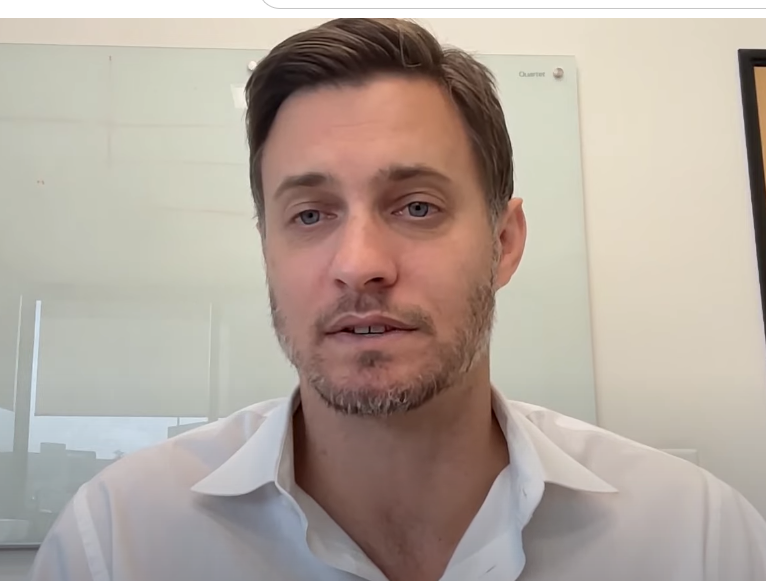Mark Herrema has developed a profession that combines financial opportunity, environmental mission, and scientific ambition. Even if his precise net worth is not made public, a number of factors come together to provide a reasonable estimate. Under his leadership, Newlight Technologies obtained $125 million in equity capital in 2023, a clear indication that investors think AirCarbon, the company’s bioplastic alternative, is both viable and economically scalable. That amount alone feeds rumors that Herrema’s shareholding has actual financial weight even though it has been diluted by investor rounds.
Many green tech CEOs lack the capabilities that Herrema has thanks to her education and early experience in process engineering, polymer functionalization, and strategic business development. After earning a magna cum laude degree from Princeton, he established a network that many founders use in addition to his technical competence. His lengthy history (since 2003) indicates not only invention but also operational perseverance, which is frequently the most challenging aspect of creating long-lasting businesses.
Mark Herrema – Bio & Financial Snapshot
| Item | Detail |
|---|---|
| Full Name | Mark Herrema |
| Role | Co‑Founder & CEO, Newlight Technologies |
| Education | Graduate, Princeton University, magna cum laude |
| Founded | Newlight co‑founded around 2003 |
| Core Technology | AirCarbon – a biodegradable polymer made from greenhouse gas |
| Key Recognitions | Biomaterial of the Year; EPA Green Chemistry Challenge; Technology Pioneer |
| Major Funding Round | $125 million equity raised in 2023 |
| Known Public Financial Info | Company valuation; funding rounds |
| Estimated Personal Worth | Not publicly confirmed; likely in the lower tens of millions |
| Source References |
More than only prestige is offered by honors and recognition. They open opportunities for contracts, draw in collaborations, and lower perceived risk for investors. Newlight’s accolades, which include the Nova Institute’s Biomaterial of the Year award, Popular Science’s Innovation of the Year award, and a U.S. Environmental Protection Agency award, raise Herrema’s reputation in the public eye and probably contribute to higher valuation multiples. Credibility is far more important in clean economy sectors than sheer visibility.
Although it’s unclear what his income and cost profile will be, AirCarbon is already being tested in a number of areas, including fashion, food packaging, and single-use items. Profit margins may stabilize if Newlight can increase output and lower costs per unit. Valuation is usually shifted by that kind of scaling, and if Herrema keeps a sizable equity stake, his personal value would increase in line with that—modestly but significantly.
However, there are limitations. Obstacles include raw material costs, biodegradable polymer regulations, market acceptance, and manufacturing scale. Many green tech businesses have spent years demonstrating that their materials are just as durable, affordable, and compliant with regulations as plastics. Investor optimism is lowered by delays or technological failures. The company’s ability to overcome these obstacles without going over budget will probably have a significant impact on Herrema’s future net worth.
Assuming that Mark Herrema owns a sizable amount of equity and that Newlight continues to expand, it is plausible to conclude that his net worth is in the lower tens of millions of dollars, for example, between US$10 million and US$50 million. Although there is currently no financial disclosure to support a specific number, several insiders indicate this range.
That assessment is supported by comparisons with other business owners in related industries. Biomaterial startup founders that successfully finance six- or seven-figure seed and expansion rounds, construct pilot plants, sign supply agreements with major brands, and obtain government or environmental funding frequently reach this range of personal wealth years before their businesses turn a profit. Herrema seems to be headed in a similar direction.
Additionally, Herrema has discussed in public the importance of regulatory transparency and climate education as facilitators. He has argued, for instance, that consumers should be able to “vote with their dollars” by identifying their carbon footprint, analogous to food nutrition labels. Such public statements support the positioning of Newlight—and consequently Herrema—as a climate leader in addition to a materials company. Leadership in this area typically draws impact-oriented investment and regulatory incentives, both of which have the potential to significantly increase valuation over time.
According to Newlight’s business plan, Herrema is taking the long view. His company has progressed over the years from scholarly study to pilot production to actual commercial implementations. Value tends to accelerate when a business reaches specific milestones, such as secure supply chains, consistent production at scale, and cost parity with conventional plastics. At that moment, businesses frequently fetch substantially higher valuations, and business owners who have retained stock gain a great deal.
Herrema’s personal financial choices probably involve alliances with companies that already have sustainability efforts, cautious expansion, and investing in the business. He puts the business in a position to profit from outside tailwinds by coordinating with both the authorities promoting plastic regulation and the consumer desire for sustainable substitutes. This alignment is especially advantageous for valuation and, thus, for the expansion of potential net worth.
From the standpoint of societal influence, Herrema’s increasing net worth will serve as a case study in addition to being a symbol of her own financial success. When it comes to proof-of-concept versus proof-of-scale, green tech founders frequently struggle. Because of Herrema’s success, there will probably be more money invested in biodegradable materials, legislation changes, and a stronger push by larger corporations to avoid single-use plastics. In such endeavors, economic and environmental value may become more compatible.


